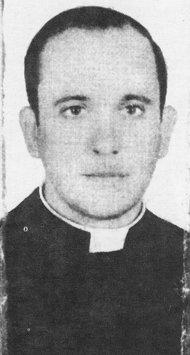What Argentine Priests Knew about the 'Dirty War'
By Mort Rosenblum
In 1975, I watched Buenos Aires churches fill with distraught mothers praying futilely for news of missing sons and daughters. Troubled police officers frequented the confessionals. Most Argentines suspected that President Isabel Perón and her Rasputin, José López Rega, were behind official death squads that made so many people disappear. Priests knew the details. A military junta bundled Ms. Peron off to exile in 1976 and unleashed full-bore repression. They called it war, but it wasn’t. Disparate acts by unconnected rival leftist groups brought institutional torture and official terror. Military flights dumped victims at sea. Still alive, they would gasp in water and sink. For three crucial years, as placid Argentina headed toward hell, I was based in Buenos Aires. I arrived in 1973 when night noises ranged to wailing tango chords and traffic din. Within a year, those were punctuated by spine-curdling shrieks as victims were bundled into those famous Ford Falcons without license plates. By the time I left in 1976, after the coup, we slept in different places each night because of unsettling threats. When profiles of those shadowy death squads emerged, they were as we had thought: off-duty cops commanded by high-ranking police and military officers. Many were devout family men who believed themselves on a mission for God and country. My sense is that the “war” would have been far less dirty had the Roman Catholic church stood up to its perpetrators. “The church behaved appallingly badly,” Robert Cox recalled on the phone from South Carolina. As editor of the English-language Buenos Aires Herald back then, he hammered away at the military’s excesses which national dailies all but ignored. I never met Jorge Mario Bergoglio, now Pope Francis but then superior of Argentine Jesuits. Mr. Cox knew him well. Mr. Cox helped the human rights campaigner Emilio Mignone search for two priests kidnapped by death squads. They resurfaced after five months of brutal torture. Although a court case was dropped against Father Bergoglio, both priests accused him of playing a part in their captivity. In his book “Dictatorship and Church,” Mr. Mignone excoriated the Roman Catholic hierarchy for inaction. But, Mr. Cox recalled, he did not say that the Jesuit superior handed over the two priests. “Mignone believed Bergoglio was like a pastor who lost his sheep and did nothing to find them,” he said. That is what I saw on a large scale. As Associated Press bureau chief, I was finally able to link the government to death squads because a U.S. Embassy attaché, an F.B.I. official, decided to spill the beans. At the time, only Mr. Cox and his American-owned paper had the courage to demand answers about mysterious disappearances. No one gave them. My informant sketched a complete, gruesome picture. But I could not quote him. The church could have spoken out publicly while privately giving reporters leads to follow. Some priests worked quietly to help families find missing loved ones. But Argentine prelates were leery of activist priests elsewhere in Latin America. Some shared the junta’s belief that the military was defending a wider world with a noble campaign against Communist threat. The same might be said for Gerald Ford’s administration, which knew much and did little. But politicians and diplomats answer to a lower order. The church saw widespread government-backed atrocities up close on a daily basis. It leaders apparently concluded that the end would justify the means. But it didn’t.
|
.
Any original material on these pages is copyright © BishopAccountability.org 2004. Reproduce freely with attribution.
